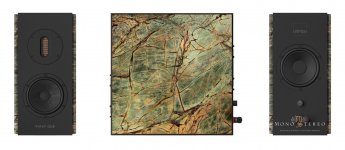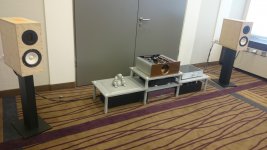If someone would like to hear our new First One amplifier and First One monitor speakers system, please come from Friday 11th May to Saturday 12th May from 10-20h at the Sheraton Arabela Hotel (congress center - Klense) in Munich.
Mono and Stereo High-End Audio Magazine: NEW UBIQ-LAB FIRST ONE SPEAKERS
Mono and Stereo High-End Audio Magazine: NEW UBIQAUDIOLAB FIRST ONE SPEAKERS
Mono and Stereo High-End Audio Magazine: NEW UBIQ-LAB FIRST ONE SPEAKERS
Mono and Stereo High-End Audio Magazine: NEW UBIQAUDIOLAB FIRST ONE SPEAKERS
Attachments
Interesting design, the rear mounted woofer - is that a passive or active unit? What is the potentiometer used for?
PCB production already in progress, among them also the First One module intended for DIY use, which is in the former M size with one pair of output mosfets.
Setting the whole new level of quality takes time, perfection isn't easy to achieve, especially in respect to competitive designs nowadays present in high-end industry. The essence of what it will be offered to the customers in ready made product range will always be available in module form too, so anyone could get first hand impression in affordable way.
Module's measurement at 500 kHz square on 4 Ohm load attached.
The new FirstOne amp sounds best so far. Detailed and easy to listen to.
Interesting design, the rear mounted woofer - is that a passive or active unit? What is the potentiometer used for?
The rear unit is active. Measurement show that the speaker goes from 25Hz up.
The knob is not a potentiometer but will be a 3 position switch for adjusting treble to the room acoustics (similar like Tannoy or Focal).
Hello Everyone,
How high temperature Hypex smps1200a400 module achieve during operation with FO?
My SMPS unit (not Hypex) is too hot and I have to find new \ seperate chassis case for it. In case of SMPS from Hypex problem with too high temperature is not present?
BR,
edek44
How high temperature Hypex smps1200a400 module achieve during operation with FO?
My SMPS unit (not Hypex) is too hot and I have to find new \ seperate chassis case for it. In case of SMPS from Hypex problem with too high temperature is not present?
BR,
edek44
I mean the VAS idle bias current, that it supposed to be 18 mA.
It isn’t stable.
With my current setting it drifts between 16 mA to 20 mA.
Is it OK ?
It isn’t stable.
With my current setting it drifts between 16 mA to 20 mA.
Is it OK ?
Thanks Tournesol,
What is the maximum safe VAS idle bias current ?
If it goes to 25 - 30 mA is it OK ?
What is the maximum safe VAS idle bias current ?
If it goes to 25 - 30 mA is it OK ?
And some photos of my enclosure.
Comments please ....
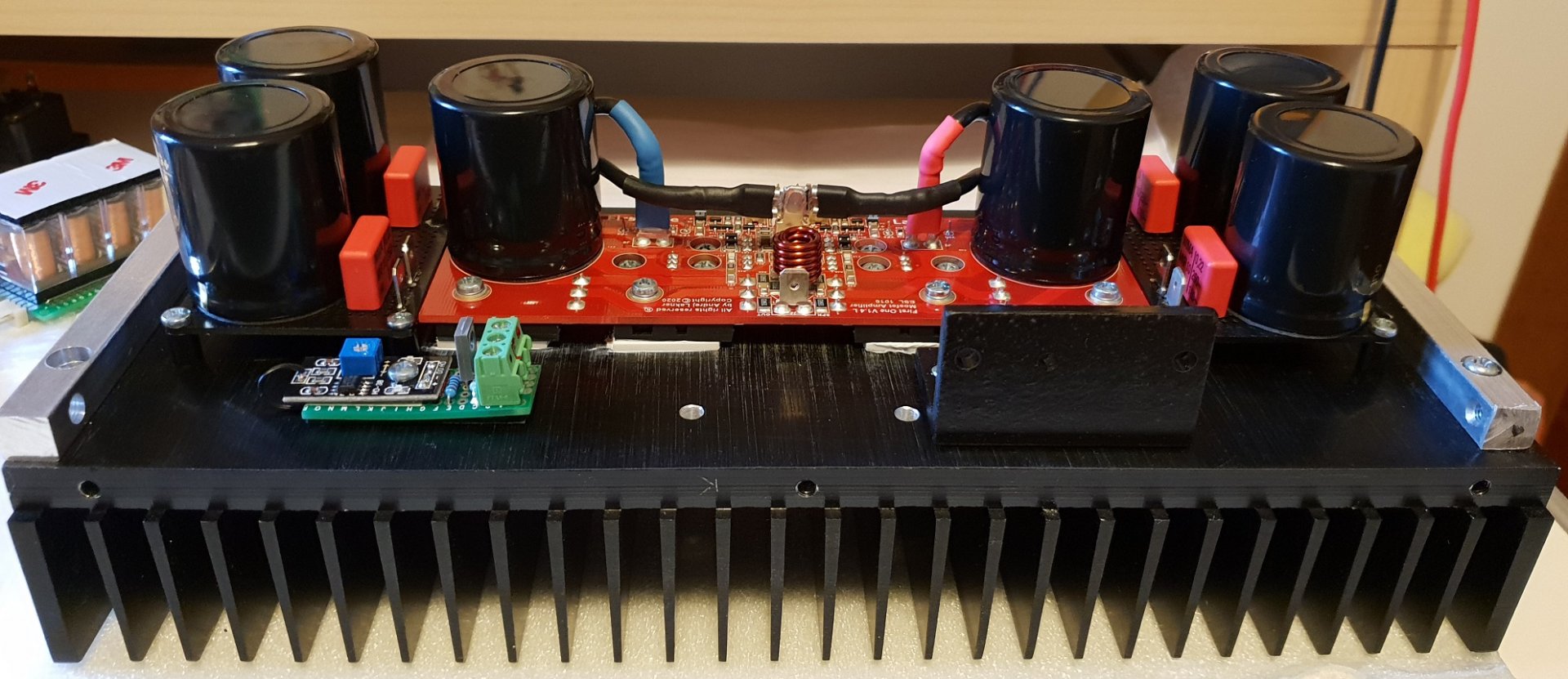

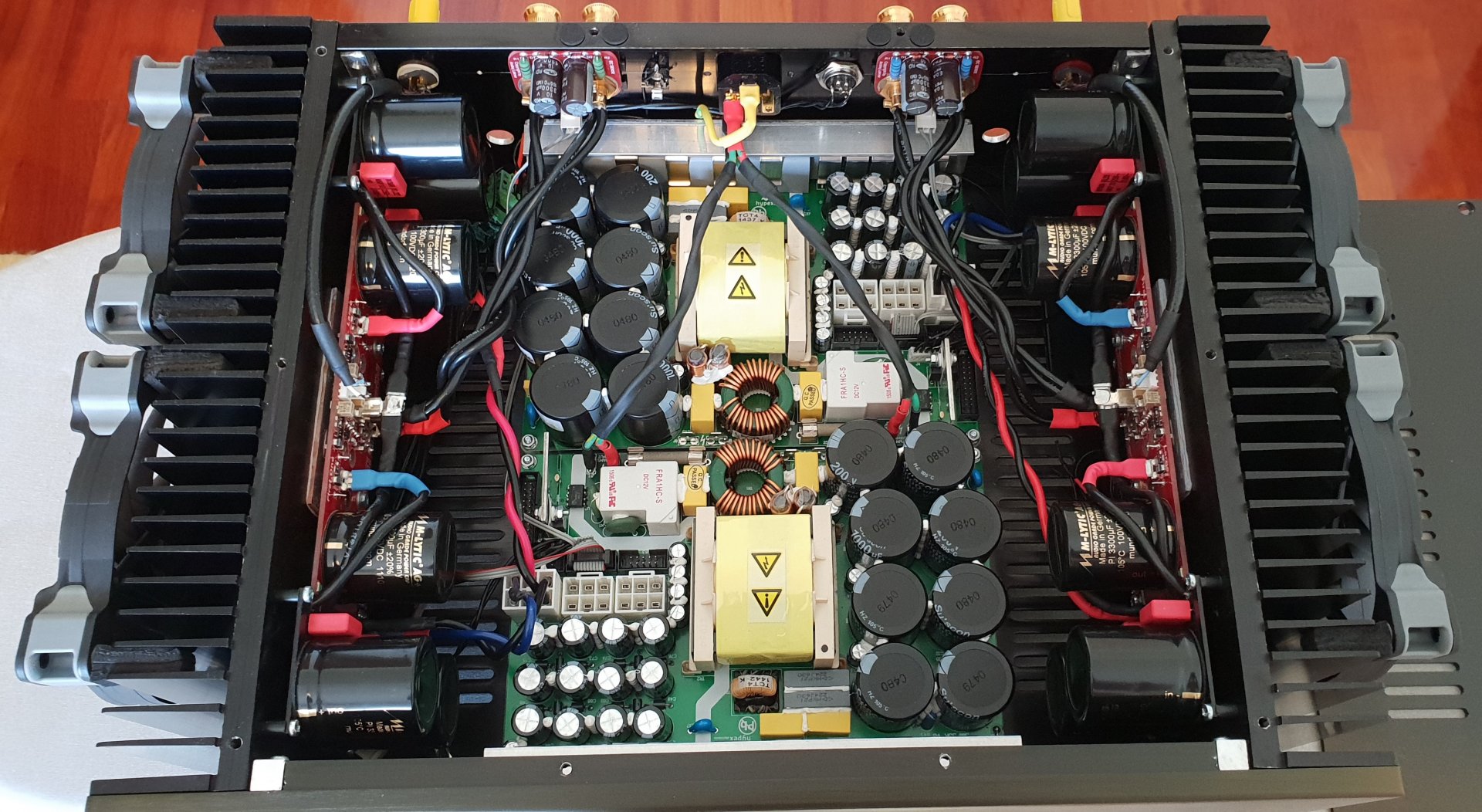
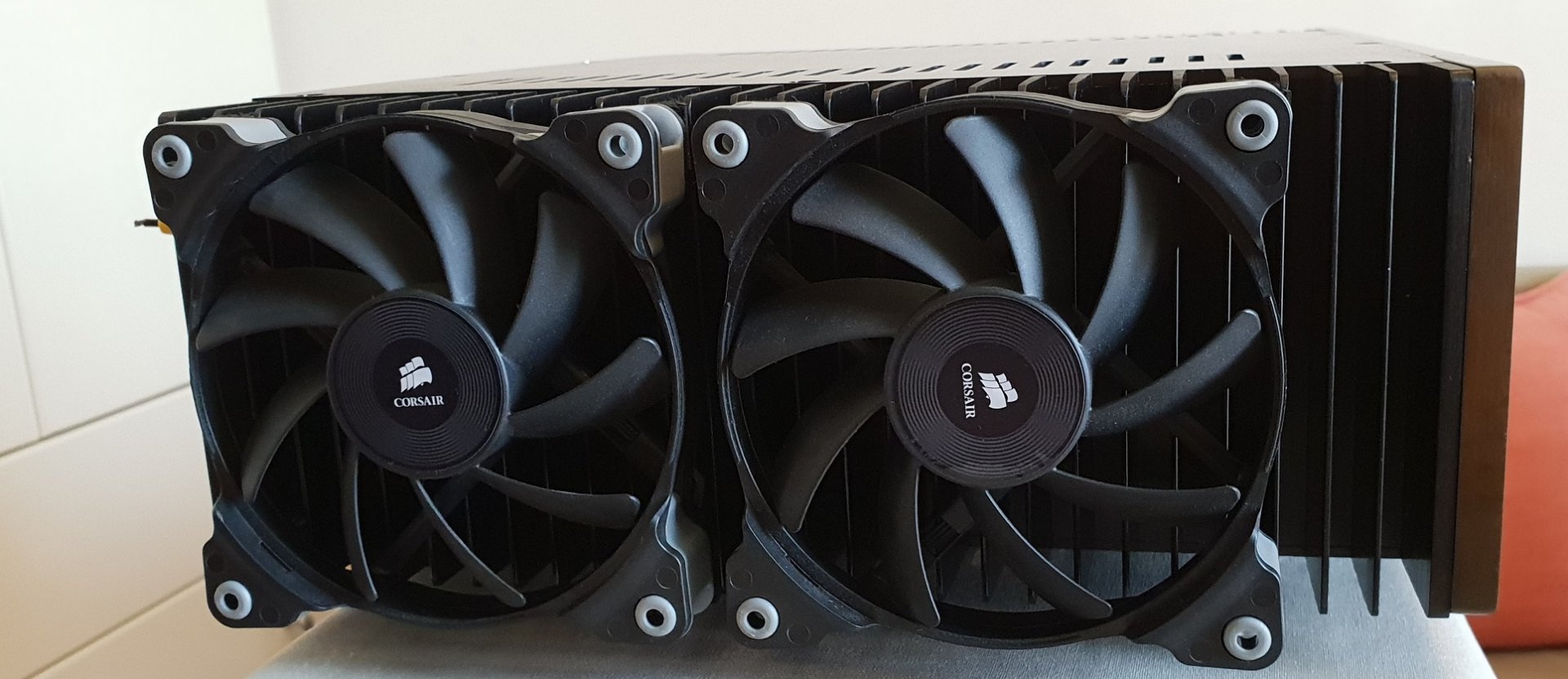
F.O.- Ενισχυτής mosfet από τη Σλοβενία | Σελίδα 18 | AVsite
..
Comments please ....




F.O.- Ενισχυτής mosfet από τη Σλοβενία | Σελίδα 18 | AVsite
..
Last edited:
It depends of the Voltage and the way they are cooled. But There is *no* interest to increase-it: iI fixes the current in each power mosfet around 150/170mA, witch is their ideal working point.Thanks Tournesol,
What is the maximum safe VAS idle bias current ?
If it goes to 25 - 30 mA is it OK ?
May-be not a so good idea, as it will change in a brutal way the temperature inside the box, so, directly affect both quiescent current and, depending of the air flux, the offset.Looks great but I would put the fans under the box 😉 maybe halfway inside/outside,
May-be not a so good idea, as it will change in a brutal way the temperature inside the box, so, directly affect both quiescent current and, depending of the air flux, the offset.
Not so if your fan control is "intelligent", and you get the added benefit of increasing your expensive PS's life also. 😉
Because convective cooling is more efficient this way, you can set the fan output (noise) lower...
Cheers,
M.
You should be right, BUT...Not so if your fan control is "intelligent", and you get the added benefit of increasing your expensive PS's life also. 😉
Because convective cooling is more efficient this way, you can set the fan output (noise) lower...
You cannot control the air flows inside your enclosure. They can be highly different for the two input transistors, and so, increase the offset.
Concerning the quiescent current, you know how long you have to wait for your amps are temp stabilized before to adjust-it.
Concerning the PS, the only parts that wear are the Elcaps. 10-20 years, such a big deal ?
The only thing that I dislike is the cooler of the Hypex SMPS. Those far to be optimal horizontal fins.
Last edited:
- Home
- Vendor's Bazaar
- First One - mosFET amplifier module

